How to choose the best cross country ski gear from skis and bindings, to boots and poles.
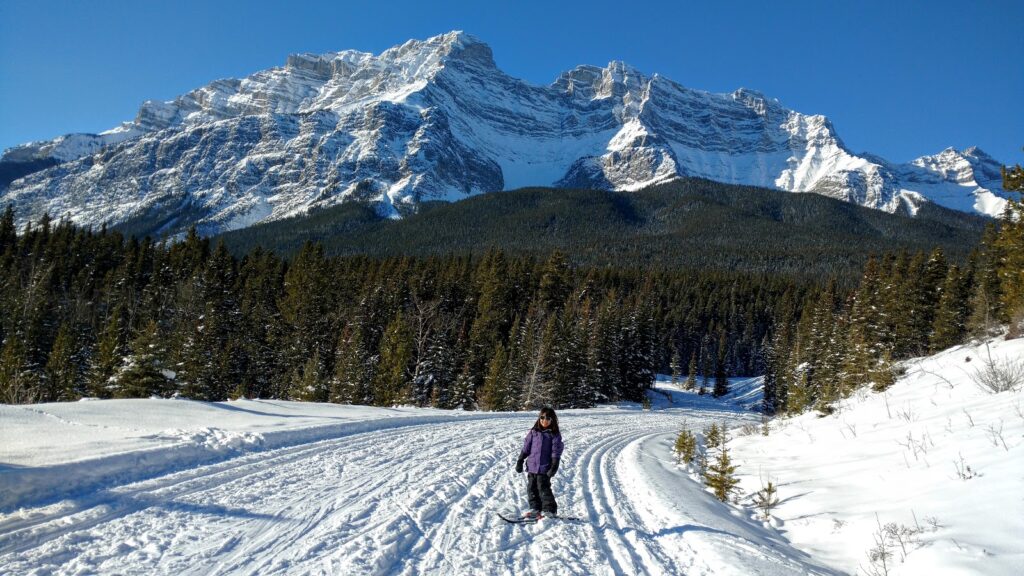
Before investing in cross country ski gear, it’s important to learn the difference between the types of skis available – waxable, waxless (fish scale), and skin – then choose suitable bindings, boots, and poles. By following these simple steps, you can choose the best cross country ski gear for your needs, and be on your way to kicking and gliding down the trails.
Table of Contents
1. Consider where you plan on skiing (trackset trails, backcountry, or both?)
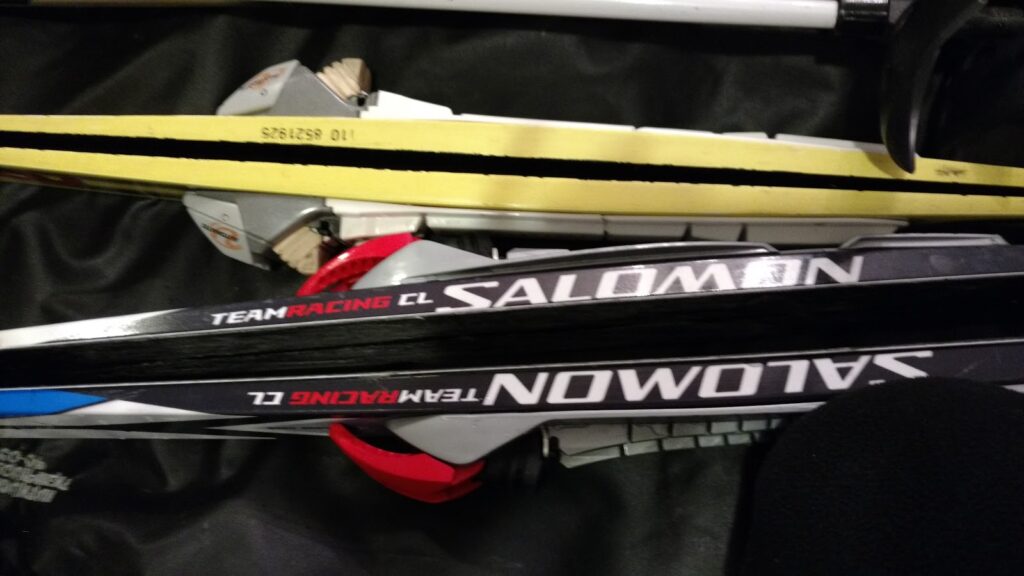
Before you go to a ski shop, consider where you will do most of your skiing so you can get the right cross country skis for your needs.
Groomed Terrain: Best for Classic Cross Country Skis
If you will be sticking to groomed terrain (i.e. trackset trails), Classic Cross Country Skis will be your lightest and most affordable option. Light also means fast! However, light touring skis with metal edges that fit in the track (less than 70 mm wide) are a nice option for greater control on steep or icy sections, especially if you are a beginner.
BEST TIP FOR GROWING KIDS WHO USE CLASSIC AND SKATE SKIS: Consider “combi” classic/skate skis that your child can use as classic skis to start, and then use as skate skis when s/he is bigger!
Mostly Groomed + Some Ungroomed Terrain: Best for Light Touring Skis
If you occasionally ski on ungroomed terrain or want extra stability on steep or icy sections, I recommend light touring skis (also known as compact touring skis) with metal edges. The metal edges will give you a lot more control and confidence, with the tradeoff of more weight.
When I started cross country skiing, I found classic skis terrifying (so flimsy compared to downhill skis!), so I switched to light touring skis and was much happier. Although I later switched to lighter and faster classic skis, I kept my light touring skis for early season/icy conditions.
If you select light touring skis, be sure to choose a width that will fit in the track (less than 68 mm wide) so you aren’t slowed down – and so you don’t widen the track.
Backcountry Touring/Ungroomed Terrain: Best for Touring Skis
Touring skis are best for ungroomed terrain as they are wider, provide more flotation, and are more robust and easier to turn. On the downside, they are costly and heavy, and don’t fit in nordic ski tracks, so I would only recommend them for serious backcountry skiers. Discuss options with staff at your local ski shop. We will not be covering touring equipment here.
2. Waxable, waxless, or skin skis?
Since cross country skis are made for traveling uphill, downhill, and on flat terrain, they require a kick zone to help you push off (otherwise you’d just slide around). The kick zone can be waxless (with a fishscale or similar pattern), “skin” (synthetic skins built into the ski base), or waxable (apply temperature-specific wax for grip). There are pros and cons to each type of ski, but having tried all three, I must confess I’m partial to my skin skis and almost never use my waxless or wax skis anymore.
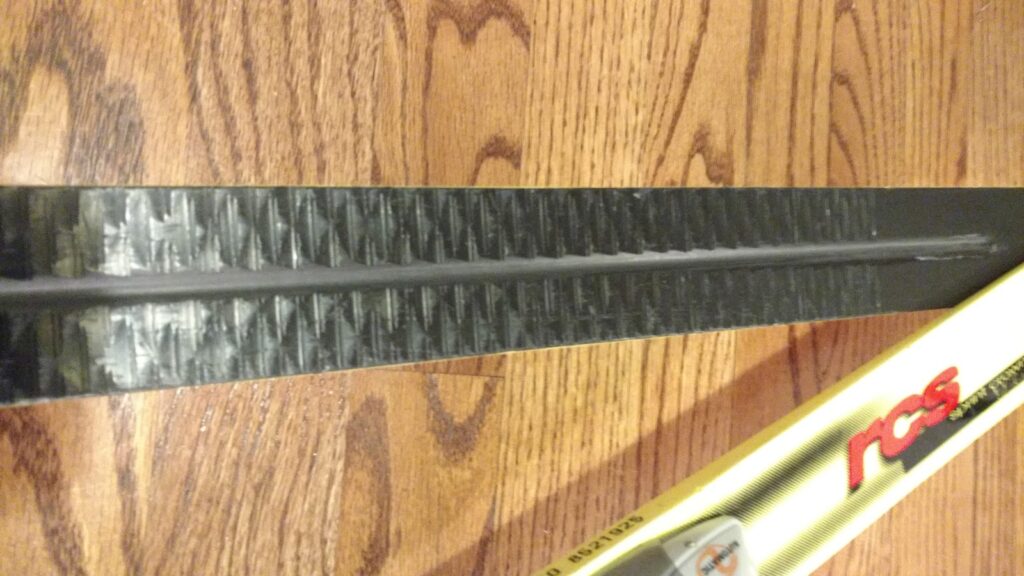
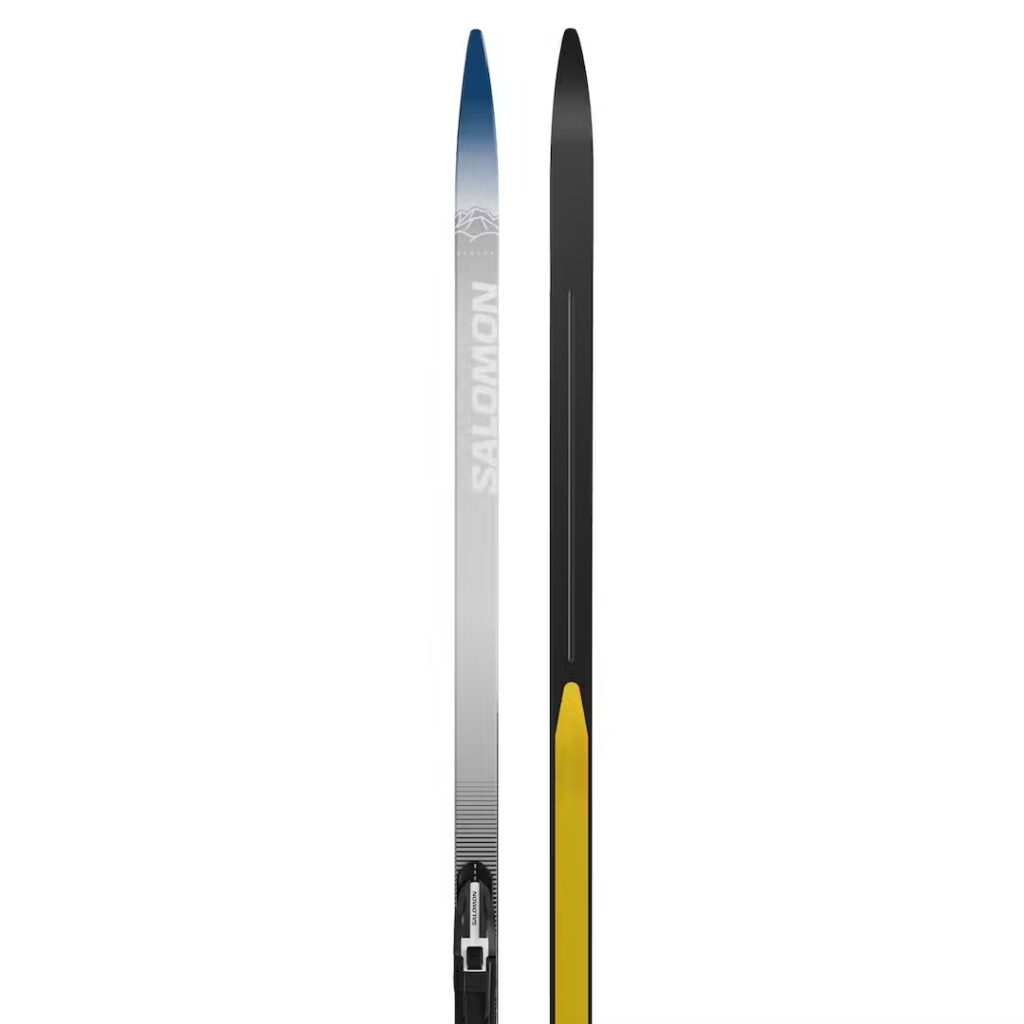
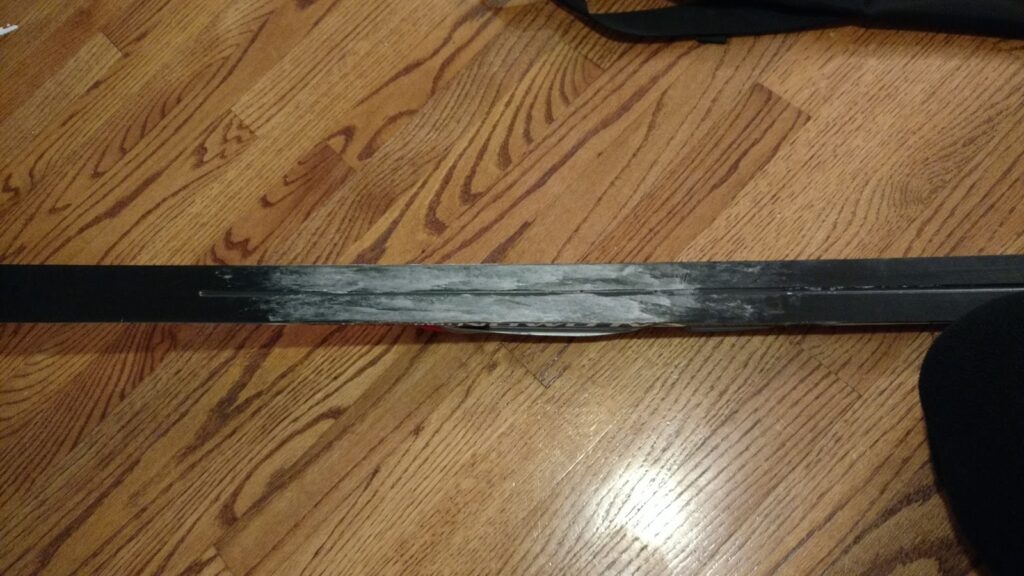
Here’s a quick overview of waxless, skin, and waxable skis and what you should know before you buy them:
Waxless Skis
Recommended for novice or recreational skiers, or children under 8 years old (Bunnies and Jackrabbits Levels 1 & 2).
Rossignol X-Tour Venture WL 52 Tour Step-in Cross-country Skis are unisex waxless skis.
If you are a novice / recreational skier, or live in a mild climate, waxless skis are very convenient. You don’t need to check the temperature and wax your skis; you just put on your skis and go. However, you will get more of a workout than folks on waxable or skin skis as you’ll be working a bit harder to go the same speed. They also tend to be a bit noisier than wax or skin skis.
Waxless skis are less expensive than skin skis or waxable skis, but over time, the pattern base will wear away and be less effective, so the skis will need replacing sooner than waxable skis (granted, this would take a very long time unless you ski a lot). My children started on waxless skis and we appreciated how easy they were to use.
The only maintenance required is to apply glide wax to the tips and tails each season.
Skin Skis
Recommended for all non-competitive skiers, or training.
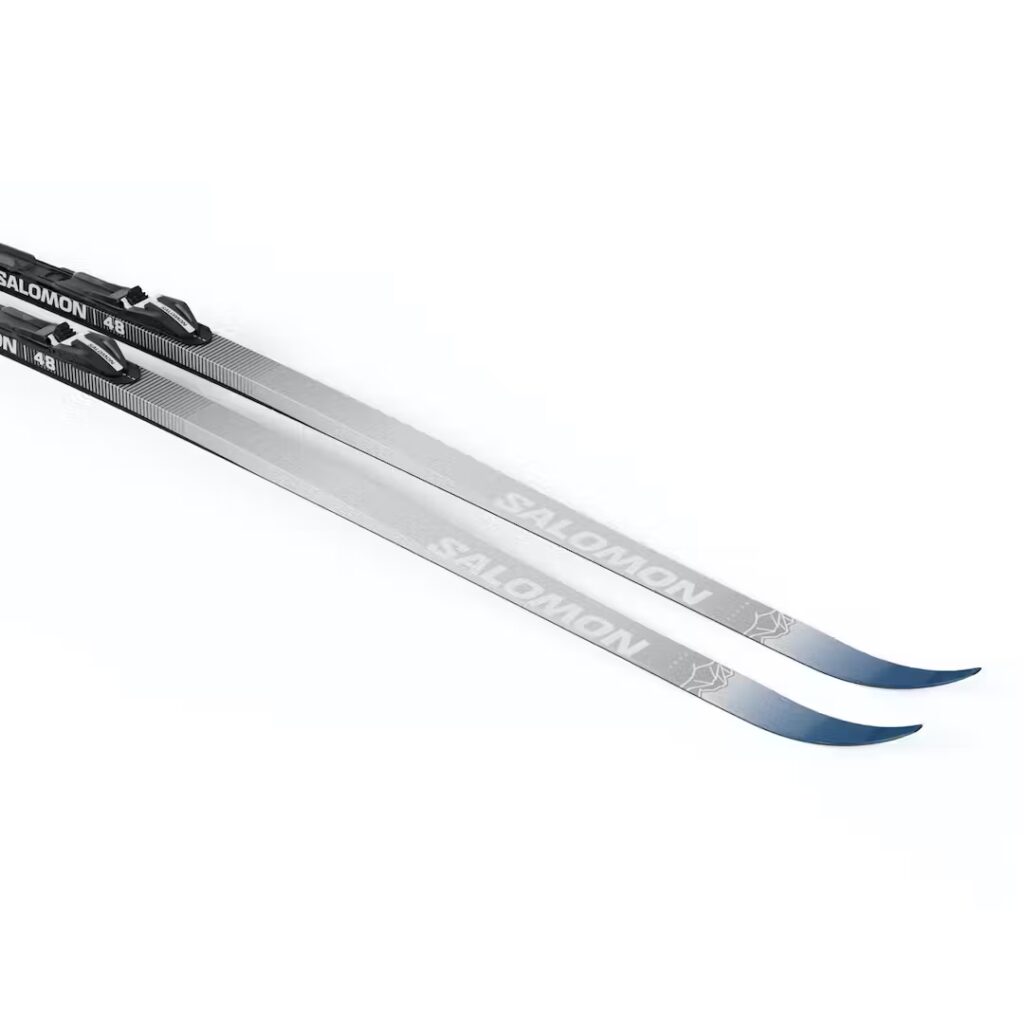
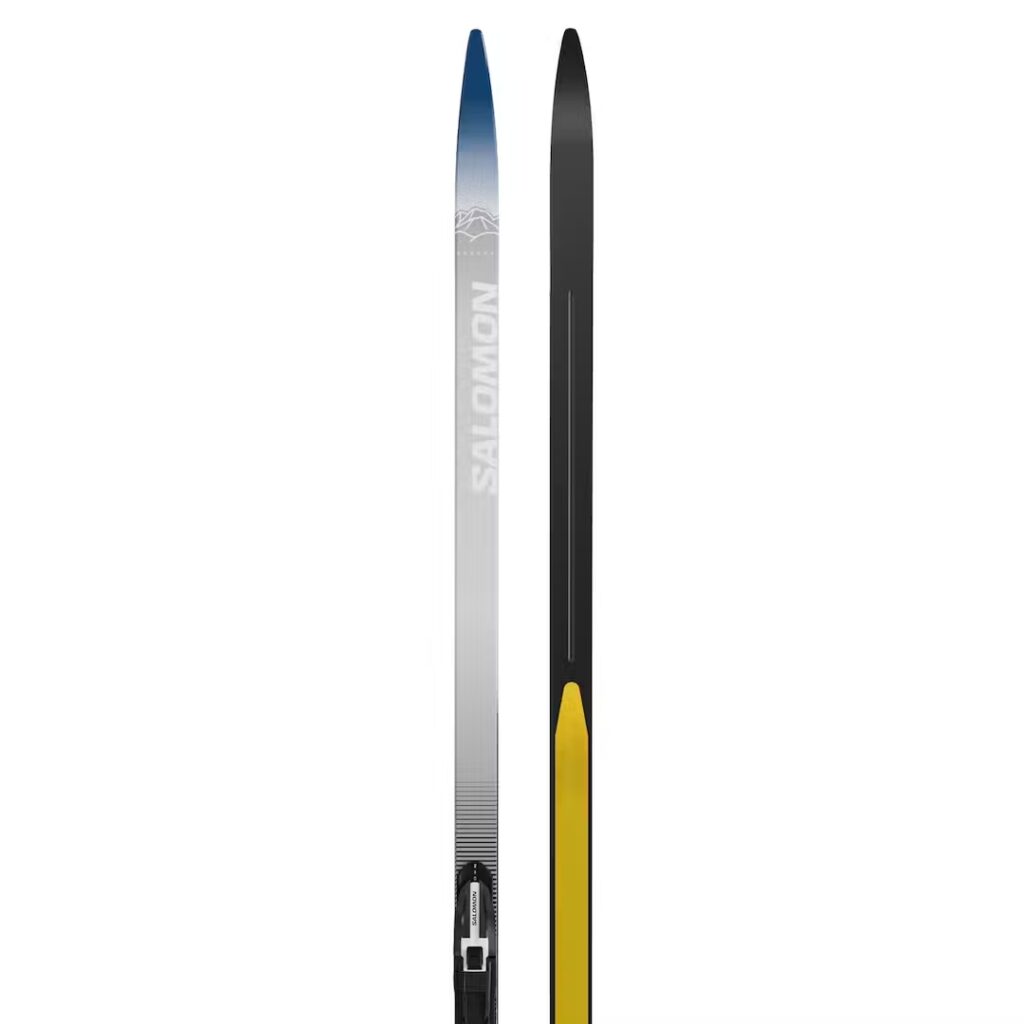

Skin Skis have synthetic skins attached to the kickzone rather than fish scales. They are faster and quieter than traditional waxless skis, but not as fast as perfectly waxed skis. If you don’t think you have the patience to figure out waxing your skis, or hate having to scrape off wax partway through the day to apply a different color of wax, consider skin skis. They work in any temperature and don’t need kick wax.
A new coat of glide wax is required each season (or every 50-100 km’s skied). An occasional spray of skin cleaner (after skiing, as needed) or anti-icer (before skiing, as needed) is recommended too.
You will have to replace the “skin” section after several hundred kilometres, but if you take care of your skis, the skins could last over 500 kilometres (mine have over 500 km’s on them and they still work great). The cost of new skins is about $40-50. You can replace them yourself or pay a ski shop $25 to install them.
I have the Salomon Equip RC Skin Classic Cross Country Skis and love them! I just put them on and go, and can quickly warm up without having to fiddle around with wax.
Zeros (for 0C or 32F)
Great skis for 0C but not much else
Zeros are a specialty ski designed for skiing in 0C with fresh or wet snow (when wax doesn’t work). They do a good job in these conditions, but aren’t great for colder or warmer temperatures, so I don’t recommend them.
Waxable Skis
Recommended for frequent skiers, and competitive skiers aged 8 & up (Jackrabbits Level 3 & up).

Ski racers use waxable skis, for two main reasons: a) they are faster on the downhill (scales and skins slow you down) and b) faster on the uphill (superior grip + little/no sliding back = faster climbing). All in all, they’re faster. There is a learning curve however, and if you can’t spare a couple minutes to wax each ski, then waxless would be a better option.
Putting on a few layers of wax doesn’t take too long, but removing it is time consuming and messy. When would you have to do this? If the snow temperature is quite different from the last time you skied, or if it changed a lot throughout the day.
Also, skiing with wax skis on warm days is challenging. Waxable skis can get very sticky and accumulate snow in warm conditions (0C and above), especially if you stop. The worst condition for wax skis is 0C with fresh snow on the ground. Many a skier has experienced “high heeling” (inches of packed snow stuck to the kick zone) in 0C. When it’s above 0C, you can use Klister; it’s messy but even works in +12C!
This said, I have a pair of waxable junior racing skis for loppets or when the conditions are good for a long ski. They are light and fast when waxed properly!
Conclusion: Overall, I highly recommend waxless skis for kids and skin skis for adults (and teens that ski a lot). Ski racers train with skin skis so they don’t have to deal with the hassle of getting the wax just right (on race day, a ski technician will take care of that for them). Skin skis are faster than fish scales and almost as fast as wax skis, and so easy – you just put them on and go!
3. Other Considerations: Camber, Length, Racing Skis?
Camber

In order for you to have an effective kick and glide, your skis must have the right camber. This is basically the bendiness (flex) of the kick zone. Too soft and you will not glide; too stiff and you will not be able to kick or climb well. Ski shops can help you find skis with the right camber for your weight/experience. They use a really high tech method of slipping a piece of paper under the kick zone while you stand on both skis with weight evenly distributed; the paper should just slide beneath your feet. 😉 They will also need to know a bit about how you ski.
- Tip: If you usually ski with a pack, bring it with you, to ensure that the loaded pack + your weight works with the skis.
- For young children, skis should be soft with minimal flex, so they can get good grip.
Length
The recommended nordic ski length is up to your wrist if you raise one hand above your head. This is just a rough guideline as some skiers may benefit from longer or shorter skis depending on their ability. You can go faster with longer skis, but if you are a beginner, you will find them harder to turn.
- 2-5 year olds should have skis that are about chin height.
- Older kids can have skis that are as tall as them.
- Intermediate skiers should have skis about 25 cm taller than them.
Weight
The lighter the skis, the faster you will go (especially uphill)! I recently picked up a pair of junior racing skis that are half the weight of my light touring skis, and I feel like I can ski forever on them! Less weight = less fatigue.
What about racing skis?
Racing skis aren’t for everyone as they are stiffer and require perfect technique to work well. If you are a novice / recreational skier, racing skis will not make you go faster as you will not be able to get the skis to do what you want.
Lightweight, intermediate skiers may get an advantage from Junior racing skis as they are light and fast, but not as stiff as racing skis. If in doubt, inquire at your local ski shop and be honest about your abilities. I am very happy with the Junior racing skis that were recommended to me!
Tip Stiffness
Regarding the tips, backcountry skis tend to have stiffer tips to keep you going straight. Classic skis have slightly bendy tips that “flow” around corners and make for smoother entrances/exits from the track.
Sidecut
Since most classic skis have very little shaping, sidecut is not a huge consideration unless you’re a ski racer.
4. Nordic Ski Boots, Bindings, and Poles
Nordic Ski Boots
The Rossignol XC-2 Classic Cross Country Ski Boot (available in women’s and men’s) is an NNN-compatible boot suitable for classic cross country skiing and light touring.
While some people choose their bindings first, I chose my boots first. Why? It is almost impossible for me to find boots that fit! After trying on everything in the store, I finally found a super comfortable pair of light touring boots. I then looked for bindings that would work with them. Boots should be comfortable and snug, but not too tight (if they’re too tight, your toes will hurt and get cold faster!). Try boots on with the socks you will wear when skiing. I recommend wool blend midweight crew socks.
Types of boots: Recreational classic boots are the most affordable, light touring boots tend to be a bit warmer and provide more support, and racing boots are very tight with minimal insulation (because ski racers are moving so quickly. If you skate ski, you can purchase combi boots (for classic and skate skiing).
Compatibility: Check that your boots are compatible with your bindings! Turnamic, ProLink and NNN boots and bindings are compatible with each other. NNN, Turnamic, and Prolink boots are also compatible with NIS bindings. SNS Profil boots ONLY go with SNS Profil bindings. SNS Pilot boots ONLY go with SNS Profil bindings. NNN BC (backcountry) bindings are for NNN BC boots.
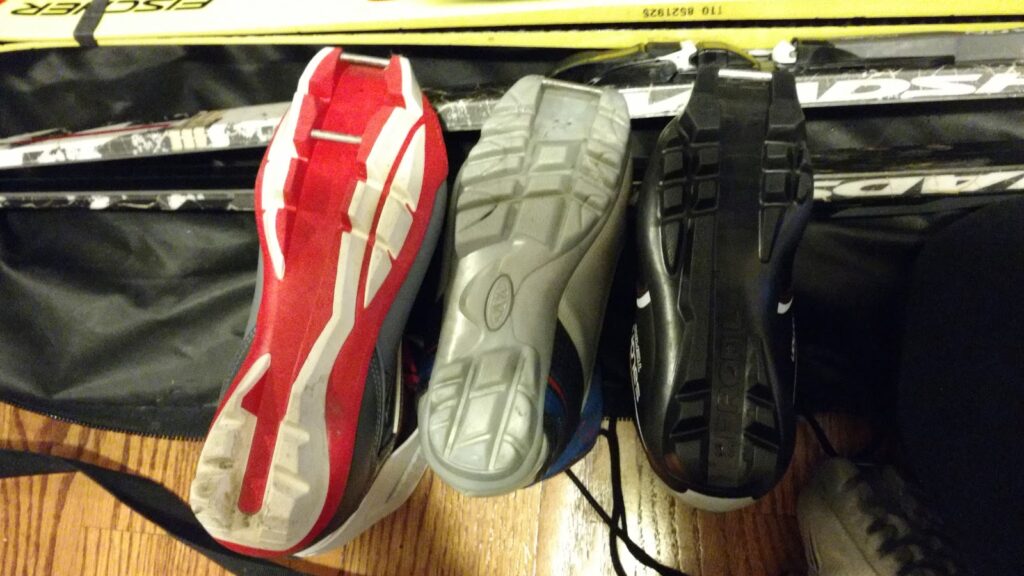
| From left to right: SNS Pilot, NNN, and SNS Profil boots |
Nordic Ski Bindings

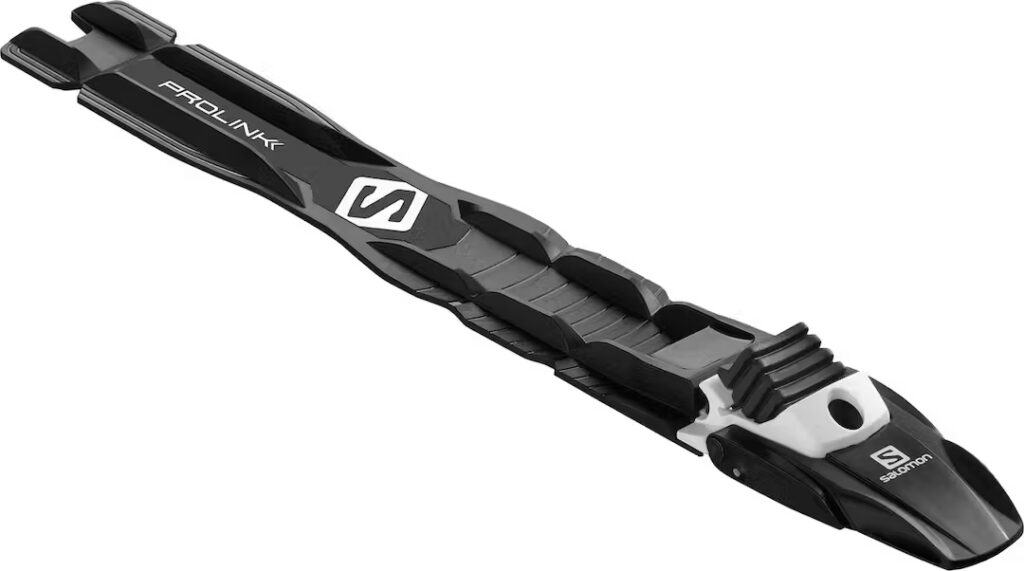
There are many different kinds of bindings. Be sure to get the kind that matches your boots! The main types are NNN, NIS, SNS, and 3-pin (seen on light touring skis). I have automatic NNN bindings on my Classic skis (have been trouble free but are annoying to step in to just right), Salomon SNS Pilot flip-lever bindings with 2 pins on my light touring skis (frequently ice up in warmer weather), and Salomon SNS Propulse RC2 bindings on my racing skis (love!). Ask the ski shop what they recommend for your setup.
Types of bindings:
- Manual bindings are more secure (good for light touring), but they require you to open and close them. I prefer lever bindings because I find them easier to step into.
- Automatic bindings are very popular because users don’t have to bend over to take their skis off. They can simply press the release button with a ski pole.
- Touring/backcountry bindings tend to be manual bindings because they are more secure. Note that NNN-BC bindings require NNN-BC boots (NNN boots are not compatible).
Tip: Try before you buy! See if you prefer manual or automatic bindings. In my experience, automatic bindings are challenging for little kids to use (I coached 4-6 year olds and they had trouble putting skis on and taking them off without assistance).

Nordic Ski Poles
Komperdell Nordic Classic Jr Poles have simple loop straps, Rossignol Force 5 Poles have ergonomic straps with velcro closures, and Salomon R 30 Click Poles have a one-click quick release and velcro closures.
Length: For recreational skiing, poles should fit under your armpit (more experienced skiers may want longer poles). Look for lightweight, but strong poles with adjustable straps*. If you ski with mittens, ensure the straps will fit around your mitts.
Materials: Carbon fibre/composite poles are super light, but not as strong as aluminum. If you’re heading into the backcountry, aluminum poles are a better option (we’ve snapped a couple ultralight poles). Aluminum poles are less expensive too!
Pole Straps: Choose from simple wrist loops (recommended for little kids), ergonomic straps (like a hand harness), or “click” straps that can be removed from the poles with one click. *Tip: For young children, it is more convenient to use poles without velcro wrist closures so you don’t have to help with them constantly. They’re cheaper too!
Snow Baskets: Most classic ski poles have very small baskets for groomed terrain. If you plan on skiing in the backcountry, you may will need ski poles with larger snow baskets.
5. Glide Wax, Grip Wax and Klister, and Skin Cleaners/De-Icers
All skis require glide wax each year, but only waxable skis require kick wax. If you have skin skis, you will need to apply a skin cleaning spray and de-icing spray once in a while.
Glide Wax – for all skis
Swix HS8 spray glide wax (for -4C to +4C), Swix T77 Economy Sport Iron for iron-on glide wax, Swix F4 Universal (Rub-on) Glide Wax
All skis – waxable / waxless / skin – require glide wax. When purchasing new skis from a ski shop, they will come with base wax and glide wax already applied. If buying used, you will probably need to apply glide wax – this should be done every 50-100 kilometres skied, and at the end of the season.
Glide wax is best applied with an iron, but if you don’t have an iron, you can use rub-on glide wax or spray glide wax. We recommend fluorine free Swix F4 Universal Glide Wax (rub on and polish) because it’s good for all temperatures. Note that glide waxes are temperature specific, so if you don’t go with a universal glide wax, choose one for the temperature range you usually ski in for optimal glide.
You can DIY, or get a ski shop to hot wax your skis.
Warning: DO NOT put glide wax 1) on the kick zone of waxable skis, 2) on skins, or 3) on the fish scale pattern of waxless skis.
Grip Wax and Klister – for waxable skis
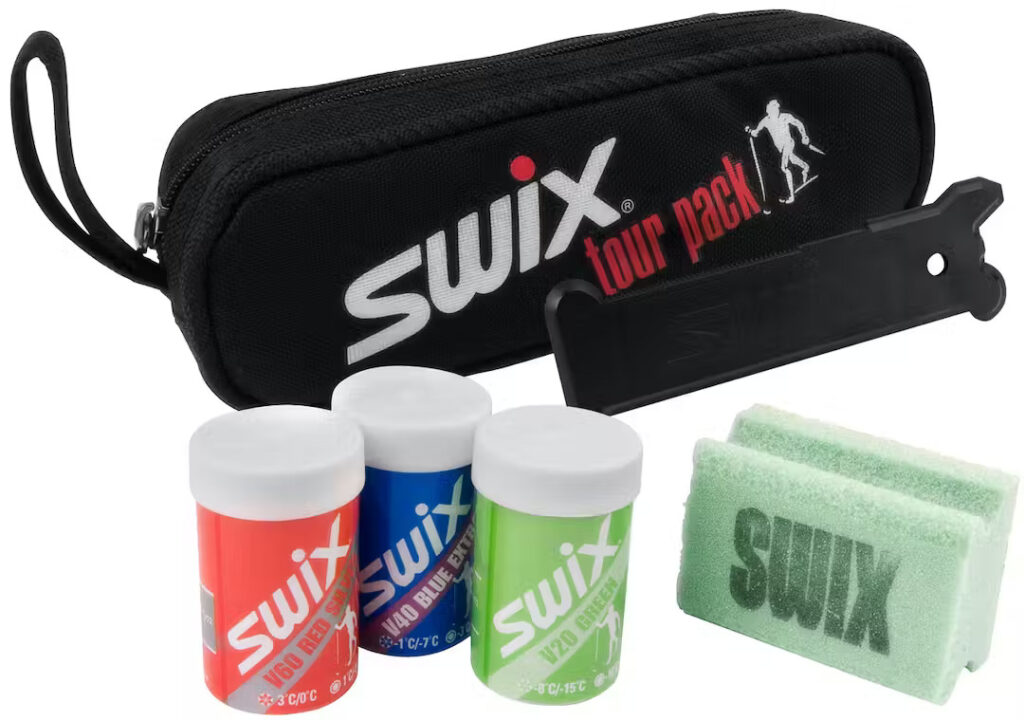
If you have waxable skis, you will need grip wax, also known as kick wax. I recommend the Swix Tour Pack with 3 different colors of wax, synthetic cork, and scraper in a carrying case. The cork is for smoothing out lumps and bumps, and the scraper is for removing old wax.
Do NOT use kick/grip wax on waxless skis! You will gum up the fish scales and get stuck in the snow!
Kick wax needs to be applied every time you ski, and reapplied throughout the day. Depending on the snow temperature, you will not always use the same color. Look at the temperature ratings on the wax, to see what you need. If in doubt, ask someone who looks like they know what they are doing. Most skiers are more than happy to tell you “It’s a blue/green/red day!”. As you get more familiar with how the wax works, you may even mix waxes in certain conditions.
For very warm days, you will need to apply Klister. It makes spring skiing possible (I’ve skied in +12C with it!) but is super sticky and messy, so wrap a plastic shopping bag around the kickzone of your skis to keep your roofbox/vehicle klister-free if you don’t have time to clean your skis before packing them.
Fluoro or regular wax? Fluoro waxes have a wider temperature range but are bad for the environment (they leave “forever chemicals” behind), so we don’t use or recommend them. They’re also extremely expensive.
Spray-on waxes are also available. They go on fast, but need time to set and still need to be smoothed out, so they don’t actually save you a ton of time. I find spray-on waxes wear off quicker than regular wax too, so they aren’t my favorite.
Skin Cleaner and Skin Care Sprays – for skin skis
Swix Skin Boost should be applied before skiing, as needed, to prevent the skins from icing up. I usually only do this once or twice a season, usually after cleaning the skins.
Swix Skin Cleaner should be used after skiing, as needed.
Tips on Buying Used Skis
Buy the skis first and then the boots – Get the best skis you can afford, then look for boots that match your bindings. You don’t want to buy the boots first then limit yourself to only a few kinds of skis. Boots are also less expensive than skis, so if you have to buy one item new, it’s better to get new boots (plus you don’t get someone else’s cooties).
Camber – Over time, the camber of skis changes, so it is important to check the camber of the skis before you take them. The online specs may say the 175 cm skis are good for 120 pounds, but they may not be anymore (unless the original owner has hardly used them).
Wax – You may need to reapply glide wax if it hasn’t been done for some time. See the Glide Wax section above.
I hope you found this overview helpful! What kind of skis will you buy?
Where to Ski in Southern Alberta
Whether you ski at a city park or golf course, or head to the mountains, there are literally hundreds of kilometres of ski trails in Southern Alberta. Here are some of the top places to go cross country skiing in Calgary and the mountain parks:
- Where to Cross Country Ski in Calgary
- Where to Cross Country Ski in Kananaskis: Canmore Nordic Centre, Kananaskis Valley/Ribbon Creek, Peter Lougheed Provincial Park, Mount Shark, West Bragg Creek
- The Best Beginner Cross Country Ski Trails in Lake Louise
- Cross Country Skiing at the Canmore Nordic Centre
- Amazing Cross Country Skiing at Pipestone, Lake Louise
- Where to XC Ski in Calgary, Kananaskis, and Banff
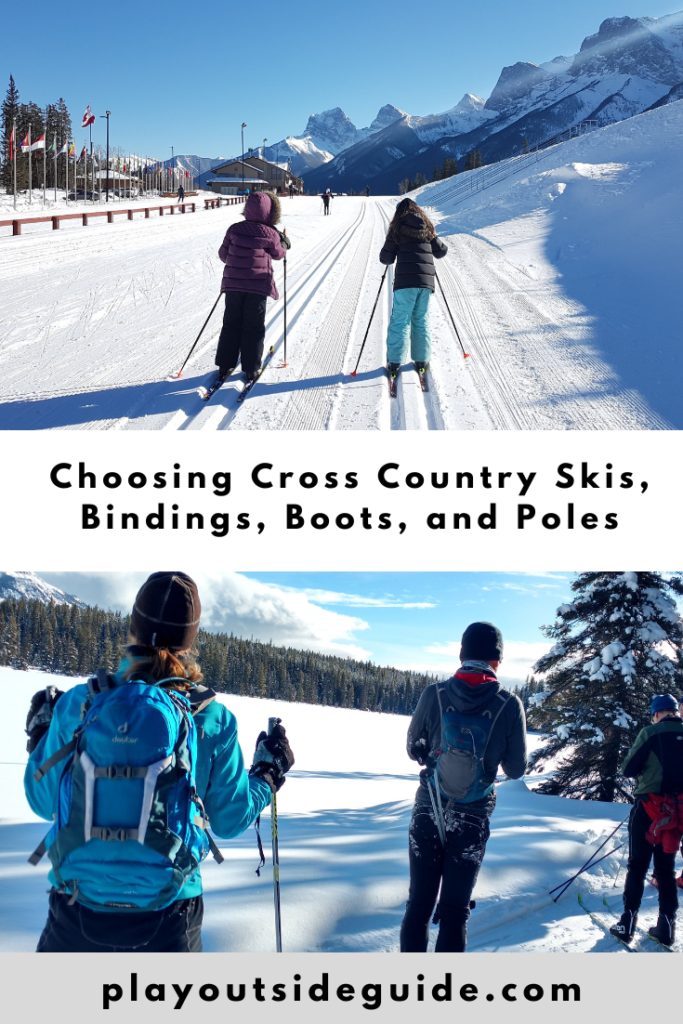









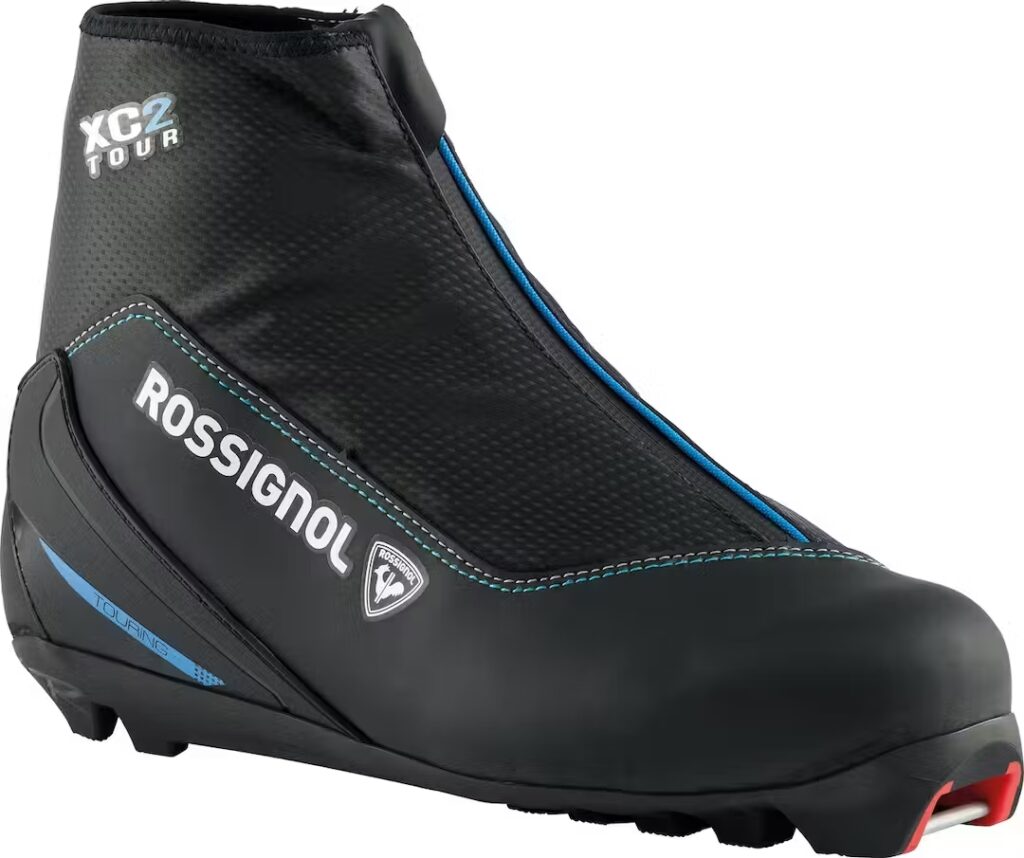
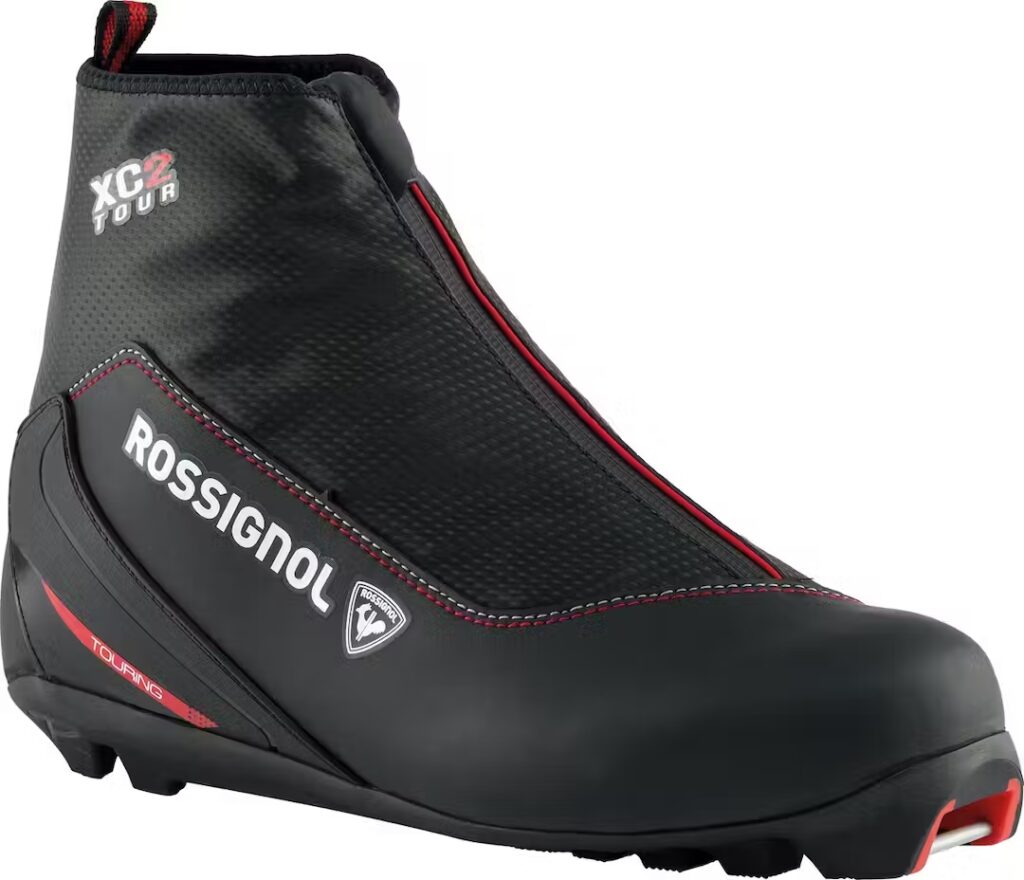

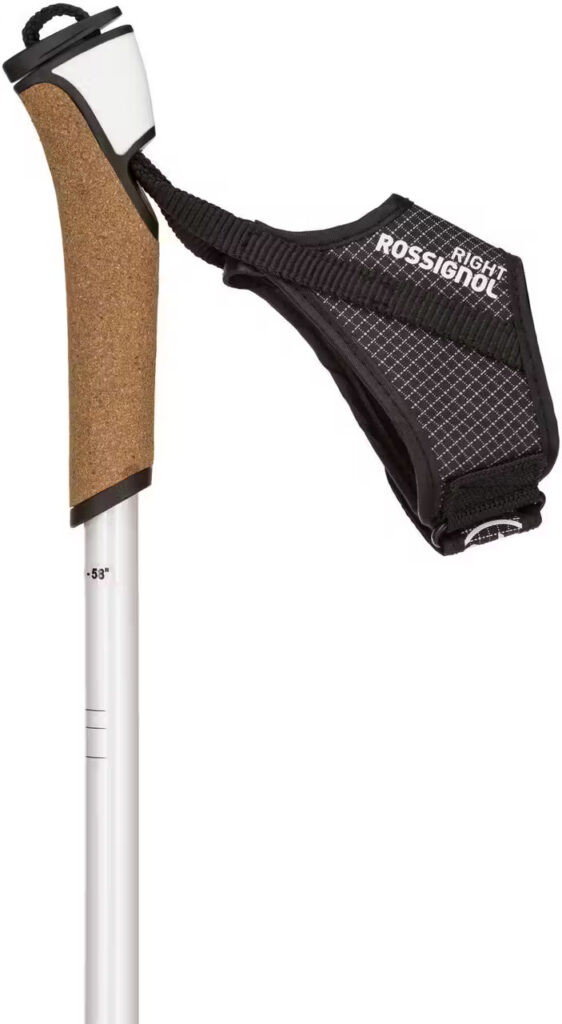
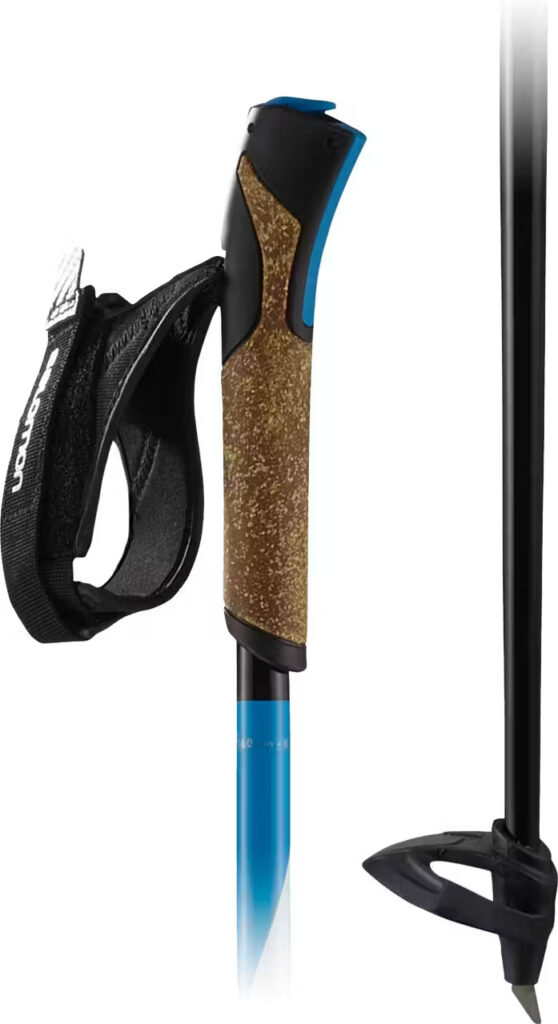

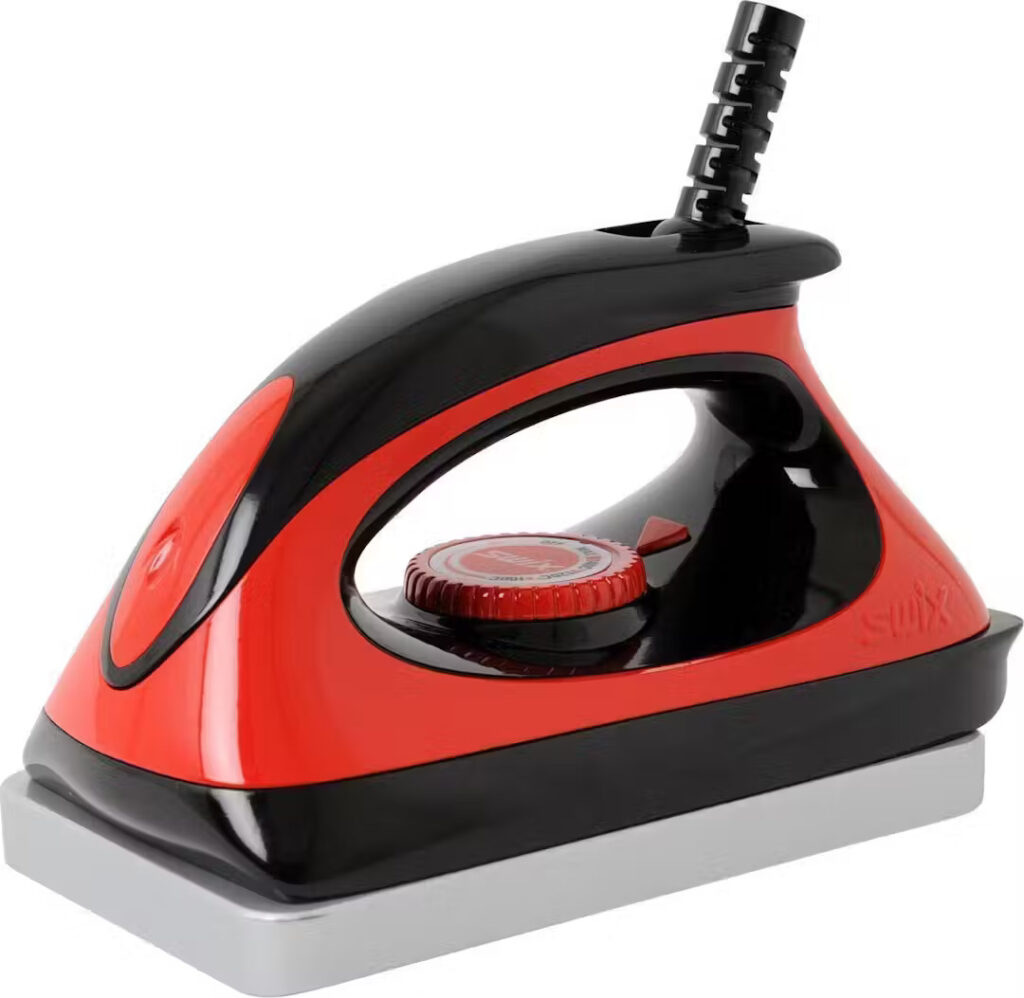
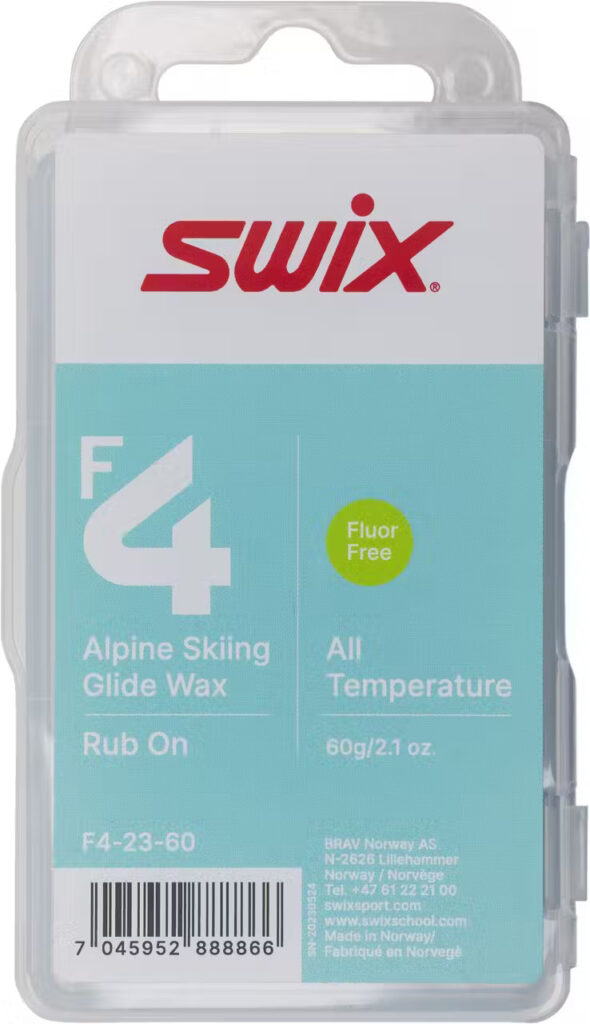
4 comments
Thanks Doug, I appreciate it! I lucked out with used skis then got my boots on sale at MEC! 🙂
Thanks Kathy!
This is great advice. I am going to recommend this article to anyone who asks me about skis. I especially like the boot advice as I have hard to fit feet as well.
Great post full of good information.
Comments are closed.